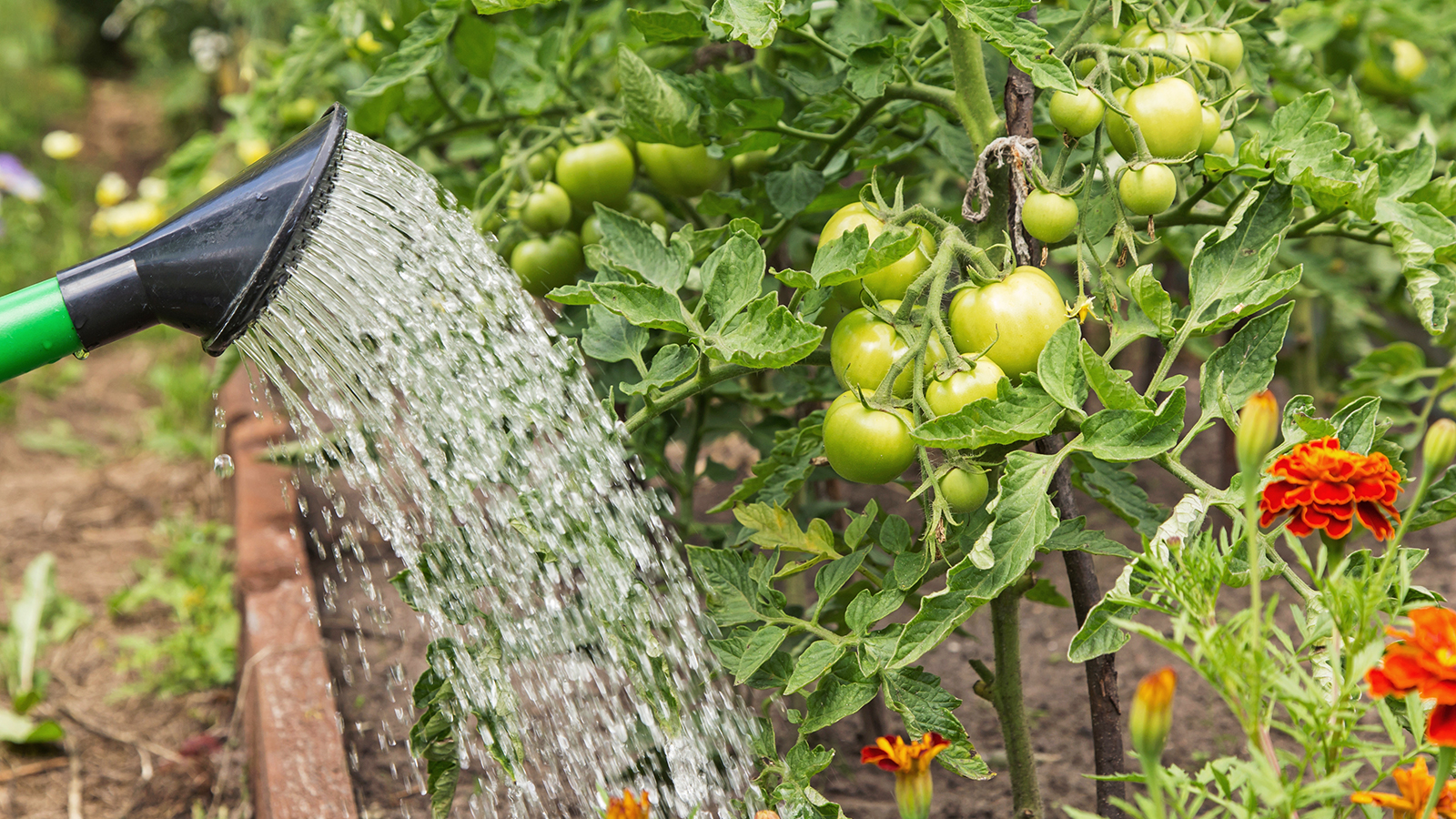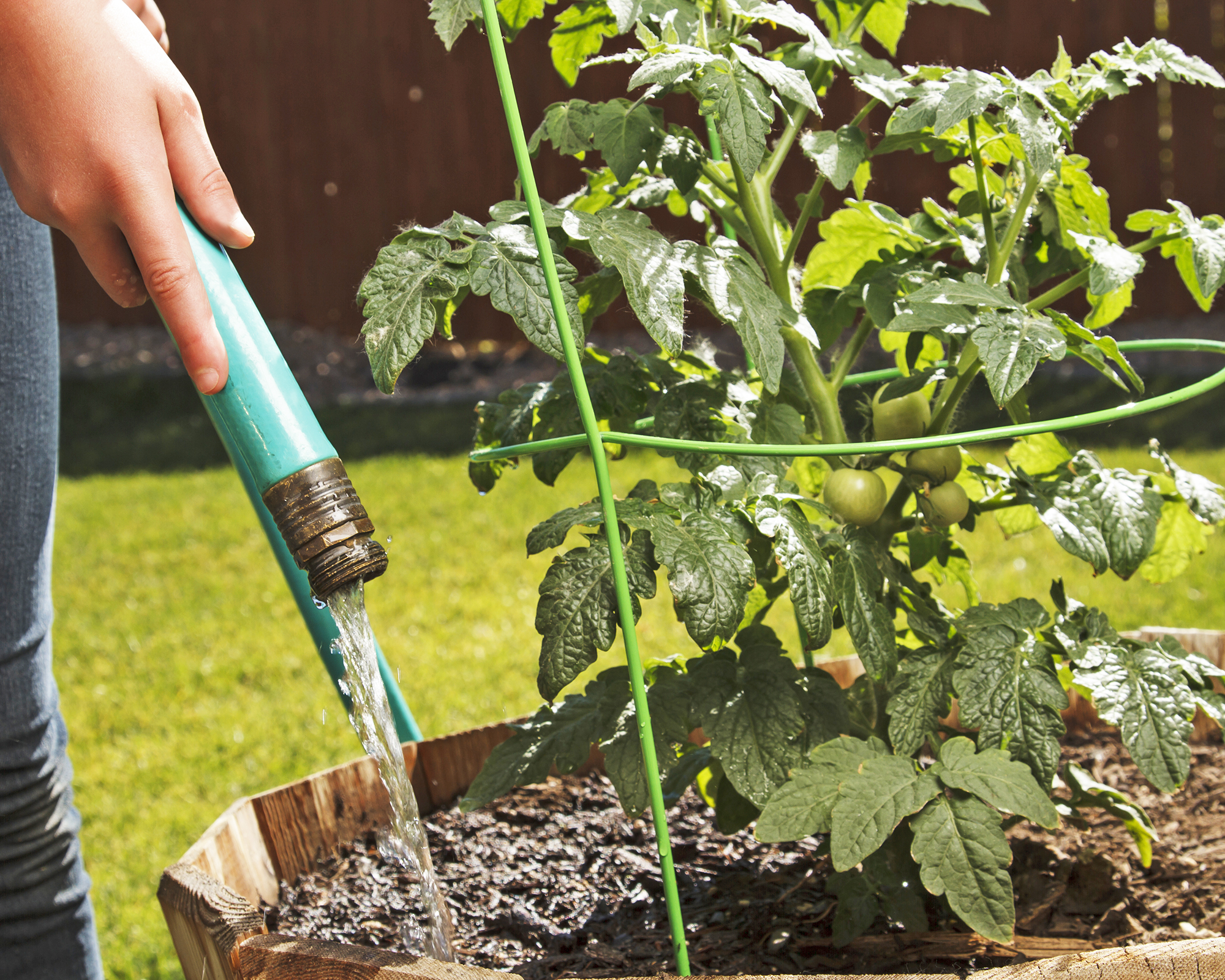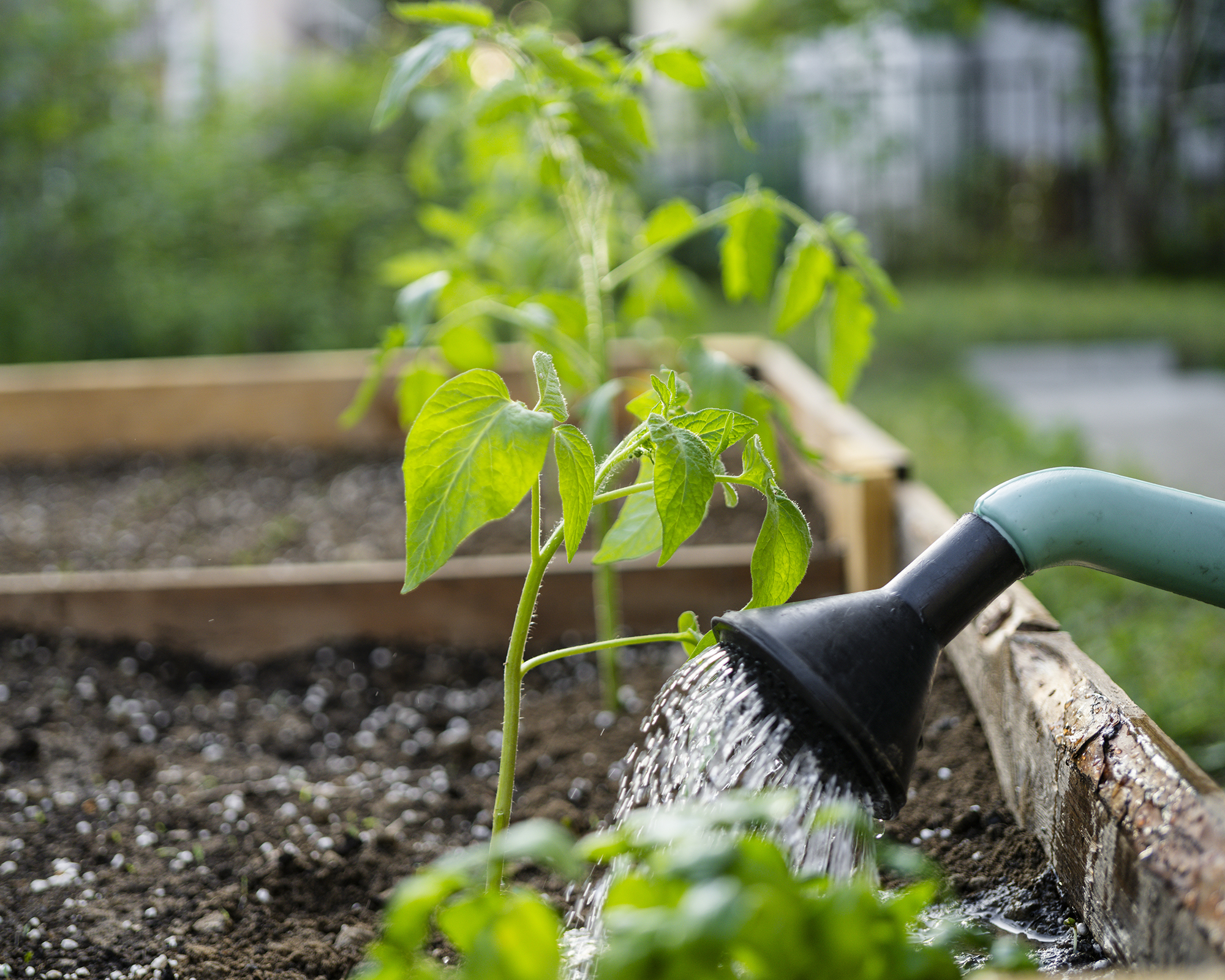How Often To Water Tomato Plants – And How To Get It Right In Any Situation
One of the most crucial parts of tomato care is knowing how often and much to water them. Learn how to get it right every time for a bumper harvest.


Heather Rhoades
Knowing how often to water tomato plants is key to keeping them healthy and productive. These thirsty plants need more water than many other vegetables, especially when fruiting, but the right frequency depends on your soil, climate, tomato variety, and whether they are in containers or the ground.
Learning how to grow tomatoes is not difficult, but success still hinges on getting a few basics right. Good soil and enough light and water are all essential to plants' health, but knowing how often and how much to water tomatoes is a skill gardeners must master through experience.
Though watering is a big part of the puzzle, it's not the only one. Watering plays an essential role in transporting nutrients through the plant, so choosing the best fertilizer for tomatoes can give your plants the extra support they need during key growth stages – especially once they start flowering and setting fruit.
How Often to Water Tomato Plants
Tomato plants need frequent watering, but there is no hard and fast rule as to exactly how often to do it. It depends on how hot and dry it is and if the plant is actively growing.
It is best not to water the plants daily, as watering little and often can lead to a poorly formed root system. A good rule of thumb is to water plants well once every two or three days in the summer. But bear in mind, rainfall counts towards this target. Once the weather cools and fruit has set, scale back watering to once a week.
Under and overwatering are both very problematic for tomato plants. So, rather than sticking rigidly to a schedule, manually check the soil every day. Push your finger into the soil, and if it feels dry below the top couple of inches, then it's time to water.
How Often to Water Tomatoes in Pots
When growing tomatoes in containers, they have limited soil to hold moisture. They are also exposed to wind, which will dry out the container. The type of container will determine how moist the plants stay: terracotta or other unglazed clay will dry more quickly than a glazed ceramic pot.
Sign up for the Gardening Know How newsletter today and receive a free copy of our e-book "How to Grow Delicious Tomatoes".
Additionally, the type of soil in the container will change watering needs. Plants grown in good potting soil, which will have water-retaining perlite, will remain damp longer than those grown in other media. In general, check the soil manually and water, usually daily.

How Often to Water Tomatoes in Hot Weather
Watering tomatoes every other day in summer’s heat is average. However, if your area is experiencing record-high temperatures, plants may need a little more water to keep the soil cool and damp. You may have to irrigate daily if the soil is dry several inches (7 to 8cm) down.
Mulching tomatoes helps to keep water where the plants need it and slows down evaporation in hot weather.
How Much Water Do Tomatoes Need?
Many factors can influence how much water a tomato plant needs at any given time, including the size of the plant, its growth stage, the types of tomatoes you're growing, soil type, current temperatures and humidity, amount of fruit, and weekly rainfall.
A general baseline is considered to be 2 inches (5cm) of water a week for a plant in the ground – more for container plants. But adjust depending on their development stage:
- Seedlings require moist soil or they will quickly wilt, so after transplant, give tomatoes about 1 to 1.5 inches (2.5 to 4cm) of water per week.
- Mature plants can handle slightly drier conditions, so after 4 to 6 weeks, reduce the quantity of watering a bit.
- Once fruiting starts, tomatoes require more water to become plump and juicy, so once you start seeing tiny fruits, bring the water amount back up.
If unsure, you can purchase a moisture meter inexpensively from Amazon, which will tell you exactly how much moisture there is in the soil.
Alternatively, plant impatiens! They are a good indicator plant to put near your tomatoes since impatiens wilt immediately when they have too little water, thus indicating that the tomatoes also need water.

How to Water Tomato Plants
The number one rule of watering tomatoes is to make sure that you go slow and easy. Never rush watering tomato plants. Use a drip hose or DIY drip irrigation to deliver water to your tomato plants slowly. This avoids any wet leaves, and the slow drip allows moisture to percolate into the soil.
When watering tomatoes, it is best to water straight to the roots rather than from above, as this can spread disease. Watering tomato plants from above also encourages premature evaporation and unnecessarily wastes water. You can use a hose or watering can – just try to get the tip close to the root system and keep water off the leaves.
Signs of Underwatering
Although it is best not to let the plant develop signs of underwatering, some visual cues will tell you it is time to irrigate:
- Wilting leaves mean there is not enough moisture to travel to the terminal ends of the stems. Drooping stems are also another sign.
- If the leaves yellow and develop chlorosis, there isn’t sufficient moisture to bring up nutrients and assist with photosynthesis.
- Slow, or stunted growth, curling leaves, and blossom drop will also signal inadequate water.
- Blossom end rot is a disease caused by inconsistent watering, as it prevents the plants from taking up adequate calcium.
Now that you know how often you should water tomato plants and how much water tomato plants need, you can water tomatoes in your garden with confidence and enjoy the fruits of your labor.

Bonnie Grant is a professional landscaper with a Certification in Urban Gardening. She has been gardening and writing for 15 years. A former professional chef, she has a passion for edible landscaping.
- Heather RhoadesFounder of Gardening Know How
